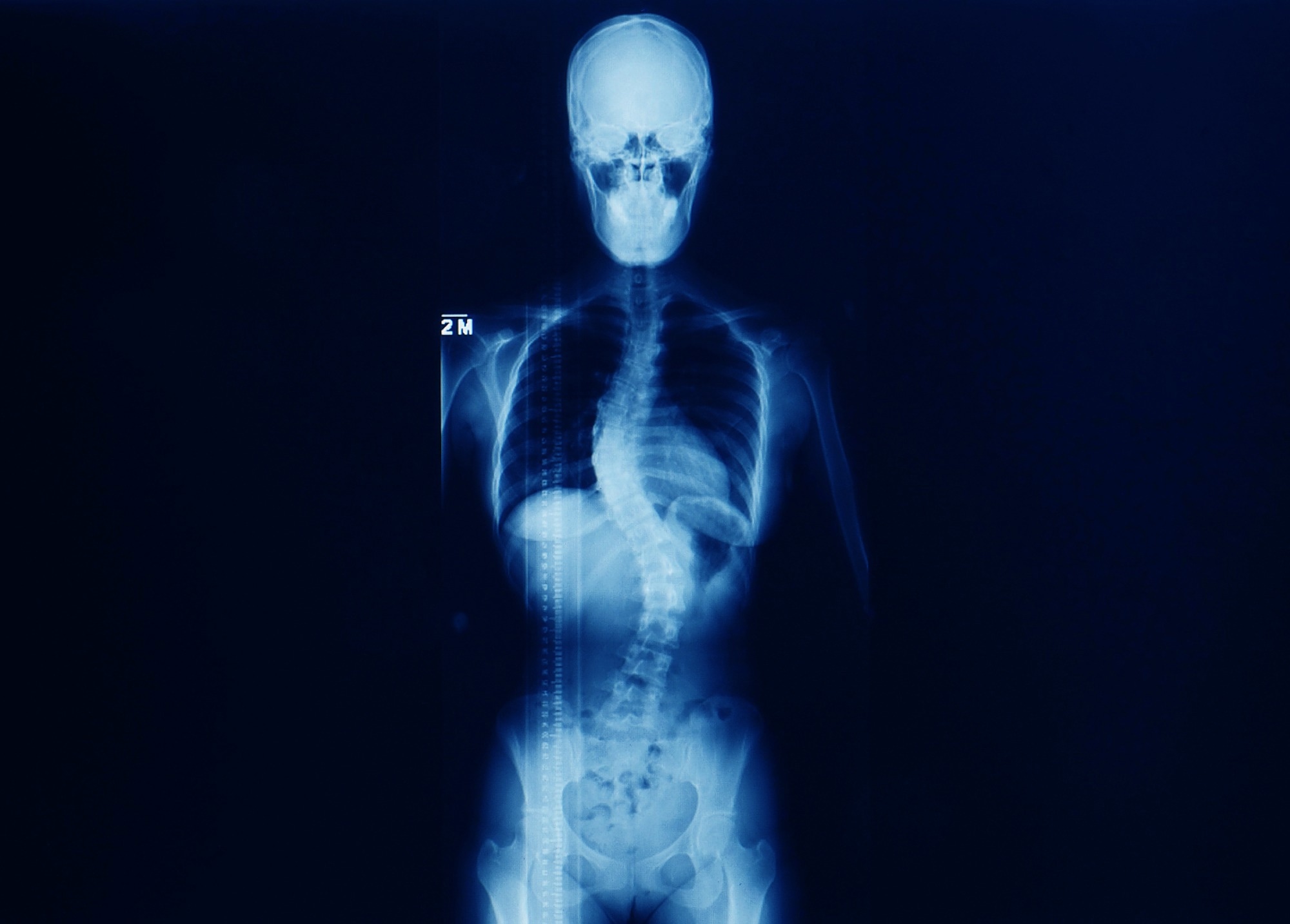In a recent article published in JAMA Network Open, researchers evaluated the ability of a smartphone application based on a deep learning model to identify adolescent idiopathic scoliosis (AIS) progression and classify its severity and curve type.
 Study: Deep Learning Model to Classify and Monitor Idiopathic Scoliosis in Adolescents Using a Single Smartphone Photograph. Image Credit: Yok_onepiece/Shutterstock.com
Study: Deep Learning Model to Classify and Monitor Idiopathic Scoliosis in Adolescents Using a Single Smartphone Photograph. Image Credit: Yok_onepiece/Shutterstock.com
Background
AIS is a three-dimensional (3D) spinal malformation that affects boys and girls in early adulthood, often hindering quality of life (QoL). AIS reduces mobility by triggering back pain and induces cardiopulmonary impairment, which makes its early diagnosis crucial.
Moreover, if left unchecked, progressive AIS deterioration occurs in two-thirds of patients during puberty, which raises the need for close monitoring.
AIS diagnosis requires physical examinations, including shoulder height, thoracic cavity asymmetry, rib and breast deformity, and waist asymmetry.
Even when done by experienced clinicians, AIS diagnosis based on the external appearance does not reliably detect the specific malformation severity and type, raising the need for radiographic examinations.
However, repeated radiographic examinations increase patient's radioexposure and potential health risks. Yet, it is necessary to guide AIS management, e.g., bracing correction for moderate spine malformation and spine surgery in cases of severe malformation.
There is a need for out-of-hospital assessment tools for AIS diagnosis, which are accessible and convenient and reduce the risks associated with repeated radiographic examinations.
About the study
In the present study, researchers developed a virtual spinal evaluation platform called AlignProCARE powered by a validated deep neural network model (ScolioNets).
They evaluated whether it had similar or improved sensitivity for AIS severity and progression assessment compared with two experienced spine surgeons who annotated Ground truths (GTs), including AIS severity, curve type, and progression, based on the actual radiography report of the participants.
Further, AlignProCARE used the Cobb angle on coronal radiographs to quantify AIS severity, where Cobb angle of 20° or less, 20° to 40°, and greater than 40° indicated no or mild AIS, moderate AIS, and severe AIS.
This information also forms the basis of clinicians' treatment planning recommendations. Likewise, it classified study participants by curve type into those having a single curve and a mixed curve.
During the follow-up examination, the Cobb angle increment helped the researchers determine whether the curve was progressive or nonprogressive. A progressive curve, defined by a curve magnitude increment of more than 5° in a six-month follow-up, is rapid and requires close monitoring.
Results
The model training data set of AlignProCARE comprised 1,780 patients with a mean age of 14.3 years, of which 1,295 were female. Likewise, its prospective testing data set had 378 patients, of which 279 were females. Further, the team performed 376 follow-up evaluations.
The model differentiated among thoracic, thoracolumbar, or lumbar, and mixed curve types, with areas under the ROC curve (AUCs) of 0.777, 0.760, and 0.860. In follow-ups, it distinguished participants with or without curve progression with an AUC of 0.757.
Based on visual observations of the unclothed back photos of individuals with AIS, the app exhibited higher sensitivity and negative predictive values (NPVs) in recognizing severities and curve types than senior and junior spine surgeons. Its sensitivity for recommending follow-up was 84.88%, and NPV was 89.22%.
In its attempt to differentiate patients requiring no clinical interventions solely based on unclothed back photographs, the model demonstrated superior performance compared with both surgeons.
Remarkably, the model outperformed specialists in distinguishing disease progression based on two unclothed back photos. Furthermore, the model potentially decreased the requirement of radiographic screening for individuals with no or mild scoliosis (Cobb angle <20°).
Traditional algorithms could not reliably extract distinguishable features from spine images. In this model, the researchers first improved the severity classification, which helped them attain enhanced performance.
In addition, they explored the single spine image-based categorization of AIS curve types and disease progressions.
In this way, they evaluated if this platform could provide remote scoliosis assessment of individuals at high risk for severe outcomes, especially where experienced spine surgeons are not readily accessible.
Conclusions
To summarize, the researchers found that the ScolioNets-powered AlignProCARE app enabled fully automated, rapid, mobile, and unbiased analysis of AIS.
It provided continuous AIS monitoring at a low cost and minimum radiation exposure.
Overall, it appears to be a promising tool to aid clinicians in tracking AIS progression and prompt early interventions to improve disease outcomes.